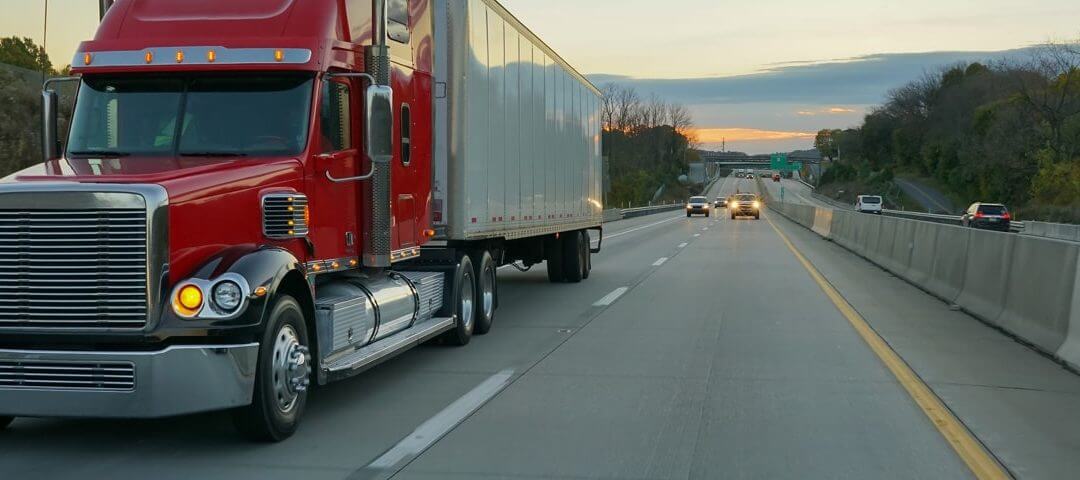Training wheels: How changes in regulations are affecting driver training on the First Coast (Courtesy of the Jacksonville Business Journal) —
After a long day working a full-time job, Sonya Clark makes her way to class at the Cecil Center of the Florida State College of Jacksonville with one goal in mind: earn a commercial driver’s license.
She was not alone.
After the sun went down, the lights came on around a small driving range full of buses and large semi-trucks, ready to be driven by students who at the start of class may never have even sat inside one before.
Driving the 25,000-pound vehicle comes after weeks of in-depth training and classroom learning which is focused not only on the ins and outs of the vehicle itself, but map reading, state laws and more.
The depth of that training is more than many would-be drivers would have receive as recently as last year.
Toward the beginning of the year, the Federal Motor Carrier Safety Administration implemented a long-awaited change in driver training, rolling out the Entry-Level Driver Training mandate. That rule — originally published in 2016 — established a national standard for training and created a list of registered training providers.
Every CDL holder now has to study things like handling and document cargo, diagnosing malfunctions and advanced operating practices like hazard perception, skid control/recovery and other emergencies and railroad-highway grade crossings.
They also have to spend time behind the wheel both on a training range and driving on a public street, something that was not previously required by the federal government.
Almost a year after the new rule went into effect, its impact are being felt in the classroom.
“If I had done it [before February], then I wouldn’t have had to do all of this,” said Clark, a student at FSCJ’s commercial vehicle driving program. “I could’ve gotten my CDL and probably be driving and working already. But then I wouldn’t have gotten the training – everything I actually need to know, you know things like what’s under the hood, what’s going on with the engine.”
Hopefully, say those involved with training the next generation of drivers, it will be felt on the nation’s highways as better trained drivers take to the road
“The federal government finally recognized that something is dangerous, frightening,” said Joe Lackey, instructional program manager of commercial vehicle driving at Florida State College at Jacksonville. ”To get a barber’s license, you have to go to 1,200 hours of barber school. Until Feb. 7th, you were required exactly 0 hours of formalized training to get a commercial driver’s license.”
TAKING RESPONSIBILITY
The new mandate also requires more responsibility on the part of trainers, who have to sign off on their students before they can get a CDL.
“There are so many people now who have registered as training providers. I think the good thing is now we see who those people are, whereas before they were able to operate in the shadows,” Lackey said. “I’m not trying to make it sound like it’s this clandestine, sneaky thing, but before there was no requirement. I can train you. I can test you. I can issue you a license and be done with it. But now, I have to sign off on it,” said Lackey.
In Jacksonville, there are now 18 schools that offer some form of CDL training to the public, with eight of them offering Class A CDL classroom training in theory and behind-the-wheel training on both range and road.
Three schools in the area — Mr.B’s CDL Testing, National Training Inc. and FSCJ — offer all three modules for both Class A and Class B licenses, which permit drivers to drive slightly smaller commercial vehicles. Six others offer all three just for Class A licenses.
That change in how trainers have to account for their students, Lackey said, means more accountability.
In the past, he said, “there are those types of schools where if you’ve got the money, well, you’ll pass and you’ll get a license and be put you out on the road and you can be somebody else’s headache. Right? And those days are going away,”
Students now have to take into consideration what they’re actually learning, not only to pass their CDL test, but to later be held accountable for what they fully understand.
“I feel like I should go to the proper teaching before I actually get on the road,” said Teryll Paris, a student in the FSCJ program.
The mandate also established a database to collect data of all trainings, potentially allowing for future studies to be done on schools and trainings, such as if there is a correlation between accidents and the amount of on-the-road training.
INVESTING IN TRAINING
To further the initiative to improve commercial driving, states like Florida have invested heavily in the profession, although none of that money has made its way to the First Coast.
Five colleges, in Fort Lauderdale, Daytona Beach, Niceville and Orlando, are splitting $6.7 million to start or expand CDL driver training programs, increasing enrollment across the state to fewer than 1,000 students a year to more than 3,500.
In Jacksonville, classes at FSCJ are always full and not yet meeting demand — so much so that the Florida State College of Jacksonville is opening up a whole new commercial driving program in Yulee
With that popularity comes diversity in the classroom according to Lackey, who says students now truly range from those looking for a first job to those who have multiple degrees and just need a change of pace.
“Society at large has recognized the importance of transportation,” said Lackey. “You know, the paradigm has changed. We’re seeing more people with secondary education, that are more entrepreneurial, are looking to start businesses … looking at it as second careers, things like that.”

